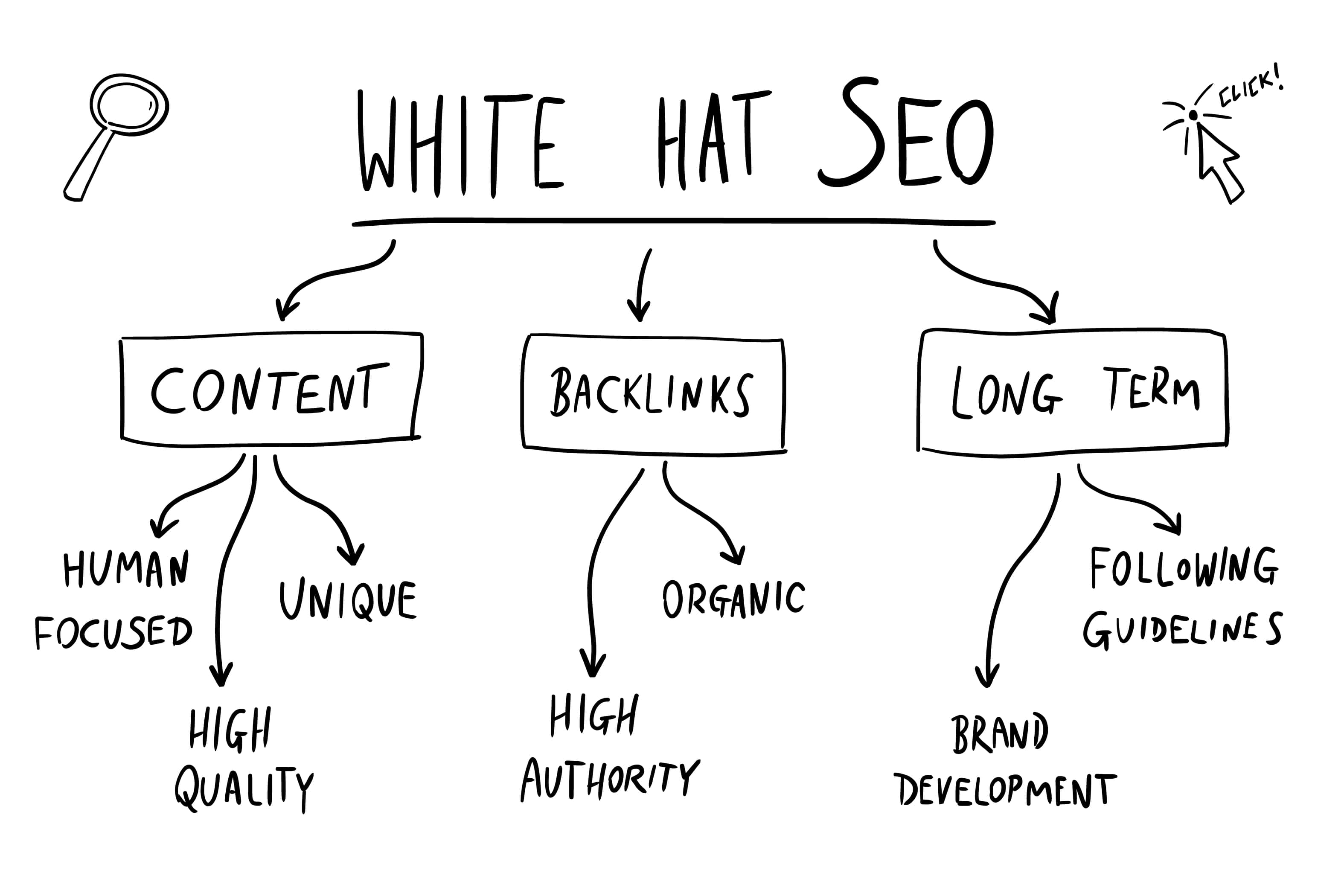Are You Updating Your Website's Content Frequently Enough?
Say a potential lead has a question about a service your company offers. Like most of us, they...

My wife and I have been catching up with the show Billions lately.
We noticed a pattern. The characters all do horrible things to get their way in the worlds of politics and high finance. Once they achieve their goals, they sometimes feel bad about how they got there—briefly. Then, they rationalize, double down and do more of the same.
Lather, rinse, repeat.
That's the approach many brands take with SEO. They want to be found in Google searches and will look the other way as their digital marketing agencies use all kinds of questionable—even downright fraudulent—methods to achieve that goal.
I mean, it works on Billions, right?
But there's another show my wife and I have been watching recently. It's called Generation Hustle and it's about what sometimes happens when ambitious people (like Anna Delvey, Ian Bick and others) make a habit of letting the ends justify the means.
They wind up in prison.
And that's what can happen to brands who play fast and loose with Google's ethical guidelines for SEO. They wind up in Google jail—and their websites are sometimes never heard from again.
That's why Idea Grove advises its clients that white-hat SEO—the use of ethical SEO tactics in keeping with Google's guidelines— is the best strategy for increasing your search presence and earning brand trust over the long haul.
This guide will teach you everything you need to know about white-hat SEO, from starting with a clean, well-optimized site to using keywords and backlinking. By following these tips, you'll be on your way to securing top spots in Google search for your business.

Quality content is one of the most critical factors in SEO. If your website has high-quality content, search engines will rank you higher in search results.
There are many ways to produce quality content. One way is to write articles that are well-researched and informative. Another way is to create videos that are informative and entertaining.
You also need to make sure your website has good design elements. This includes using clean, organized pages and compelling graphics and layout techniques. Finally, make sure your content is updated regularly. This will help keep your website fresh in the eyes of search engines, which will lead to higher rankings.
Whether a small business or a large corporation, it is essential to have mobile-friendly content. This means making sure your website is designed for devices that use smaller screens, such as phones and tablets. Doing so can help you increase your traffic, improve your rankings and gain better visibility.
There are many ways to make your website mobile-friendly. You can create separate pages for desktop and mobile users, including simplified text versions on certain pages, or create different versions of images and videos. When designing your website, consider all the different devices people use and which are most popular among mobile users.

Nobody—including Google—likes a site where the same keyword is mentioned on a page over and over again. That practice is called keyword stuffing and, while it worked well in the past, it's no longer a practice that white-hat SEO practitioners use.
The better approach is to use variations in wording, as well as to extend your strategy to long-tail keywords. A long-tail keyword is a keyword that draws less traffic but more relevant to your target audience. By focusing on these types of keywords, you'll be able to find more relevant traffic for your site and increase your chances of ranking in the search engines for highly targeted terms.
People often think of backlinks as a dirty word in SEO. But in reality, building links is one of the most important white-hat SEO tactics you can use. Backlinks are links from other websites that point to your website. They help your site rank higher in search engine results pages (SERPs), which means more people will find and click on your content.
To earn backlinks the right way, produce high-quality content (using original data is a big plus) and then attract links from high-quality sites interested in sharing your content with their audiences. The best link-building strategy today, as confirmed by Google itself, is Digital PR—an SEO-conscious approach to traditional media outreach.
Google instructs white-hat SEO practitioners to implement schema markup on their sites. Schema (also known as structured data) is a standardized format for providing information about a page and classifying its content. This helps Google determine now only how to rank content, but whether to include it in so-called rich results. Rich results include high-profile Google SERP features like Google snippets, instant answers and other results Google shares that don't require you to click.
The majority of websites today use at least some structured data, but few are as well-optimized as they could be, because most marketers leave this task to developers or CMS plugins rather than rolling up their sleeves and getting involved themselves. That’s a missed opportunity.
Putting this in traditional PR terms, appearing in Google’s SERP features can be thought of as a media placement. Adding the right structured data markup to your most important content is your way of “pitching” the search engine. It’s worth the effort.
Internal links are one of the most important SEO tactics you can use. When you create links to your pages from other pages on your website, you're telling search engines that those other pages are worth visiting too. Not only will this help your site rank higher in SERPs, but it can also help increase traffic and engagement.
The most important function of your internal links is to tell Google what each page of your site is about. Every page on your website should have a focus keyword (or set of keywords), and whenever that keyword or keywords is mentioned elsewhere on your site, you should link back to the page that has that keyword as its focus.
Otherwise, you could be making the mistake of keyword cannabilization, which will cost you rankings and traffic.
Guest blogging is a great way to increase your brand and name. It can also be a great way to learn about new topics and networks. Here are some ways to find guest blogging opportunities:
When you create a great bylined article that links back to your site, you not only achieve an SEO boost, but also thought leadership and third-party validation benefits.

Broken links are one of the most common problems website owners face, and it's a problem that can quickly become costly. Not only do broken links affect a site's ranking and SERP visibility, but they can also lead to website visitors becoming frustrated with their user experience.
Helping webmasters identify and replace their broken links is an opportunity to be a white knight of sorts for other blogs and websites. Simply use a tool like this one by Ahrefs to find broken links on a target website, then contact the website owner to share that you have found a broken link on their site and suggest they might want to replace it with a new link.
And here's where you become the hero: you have the perfect resource for them to link to—one that happens to be on your website! True, it is a bit self-serving—but it is an ethical, white-hat tactic and win-win situation for both parties.
External links are important because they give an indication of what your web page is about and what sources you are using in your research. This helps establish your content's relevance and credibility with Google.
However, like any other tool, they must be used selectively. Too many external links will give visitors too many opportunities to leave your page—and may confuse Google as well. So follow these tips:

The competition is always trying to outdo one another, and it's never been more evident than in content marketing today. Going after a No. 1 ranking for a high-value keyword means making sure your content is substantive, comprehensive, and frequently updated.
One popular tactic for competitive white-hat SEO is the so-called skyscaper technique. Per HubSpot:
Here's how it works: You start by researching popular trends, topics, and already well-received pieces of existing content across the topic areas your business typically covers. Then, you look for new and unique ways to create content that communicates a similar message—with a twist. This might mean that you leverage a new, more engaging medium, update the statistics, or employ a better design.
Typically, a skyscraper post is longer—often significantly longer—than the posts it's trying to top. The highest ranking web pages have word counts of 2,000 or more today, according to HubSpot's research.
White-hat SEO tactics can help your website rank higher in the SERPs. Follow these tips to watch your website traffic grow in keeping with Google's guidelines.
And if you get impatient and are tempted to take unethical shortcuts, watch another episode of Generation Hustle to see where that approach might get you.

Scott is founder and CEO of Idea Grove, one of the most forward-looking public relations agencies in the United States. Idea Grove focuses on helping technology companies reach media and buyers, with clients ranging from venture-backed startups to Fortune 100 companies.

Say a potential lead has a question about a service your company offers. Like most of us, they...

Want to improve your SEO rankings through trustworthiness in SEO? This article explains why...
Leave a Comment